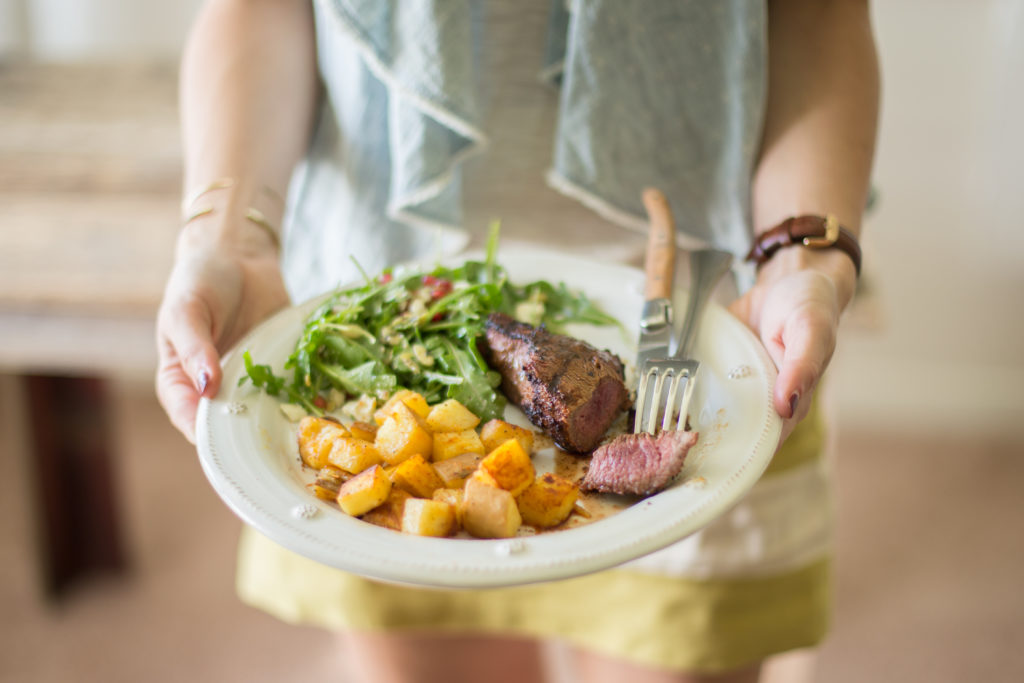Why the Paleo Diet is Good for Type 1 Diabetes
Note: By providing a place for the community to share real life experiences we hope you find inspiration and new ways of thinking about management. We encourage you to approach these offerings as you would a buffet— review the options, maybe try a few new things and come back for what works best for you. Bon Appetit! Check out our library of resources on Food.
To me, the term “Paleo” is not a diet or a fad but rather a framework—a framework for building a healthy lifestyle centered around real food, food that is un-refined and un-processed, just as nature intended it to be. Eating real food doesn’t have to be complicated or flavorless, quite the opposite in fact!
The basis of the Paleo diet eliminates grains, gluten (even corn and oats), hydrogenated oils, refined animal dairy products, refined sugars, soy and preservatives. Now, that may sound like a lot of foods and you are probably wondering well what do I even eat then?! I prefer to focus on the foods I can eat and enjoy rather than those that I can’t and trust me, there are endless foods, flavors, textures and colors that you can eat!
Personally, I believe that everyone can benefit from the framework of the Paleo diet, but personalization is key. Some people will need more good quality sources of carbohydrates depending on their activity level and some people like me do really well incorporating high quality dairy items. Keep in mind that diet is a foundation but not everything when it comes to staying healthy with type 1 diabetes and other lifestyle factors such as stress, sleep and emotions play a huge role in managing blood sugar.

Why the Paleo diet is good for blood sugar, specifically Type 1 Diabetes
- Paleo friendly foods are rich in nutrients, keeping you satisfied and your blood sugar stable. When we remove processed foods and refined carbohydrates we lower the amount of blood sugar ups and downs, which is a key to success when managing and thriving with type 1.
- Paleo friendly foods tend to be lower in carbohydrates or at least refined carbohydrates and sugars. This does not mean that the Paleo diet is “low-carb” but rather promotes a balance between good quality fats, proteins and natural carbohydrates like sweet potatoes, squashes, roots, berries, nuts and seeds and mineral-rich sweeteners like raw honey.
- Paleo friendly foods are rich in fats and proteins which actually are your body’s and brain’s best source of fuel. These nutrients enter your blood stream slowly so you avoid a lot of highs and lows—your margin of error will be that much tighter and your blood sugar that much more stable! It may take your body up to a few months to transition to burning fats as fuel, so keep this in mind!
Building Your “Paleo” plate
Everyone’s plate is going to look a little bit different, depending on how much you exercise, your age and your personal lifestyle factors. Keeping a balance of foods, types of foods and even colors of foods in your daily diet will keep your taste buds satisfied and blood sugar levels stable!
So many times I see people become obsessed over the specifics of the Paleo diet, so my encouragement to you is keep the big picture in mind, focusing on eating real food!
Personally, after a few years of experience, I have found that this balance works fabulously for me! Divide your plate into sections to create a healthy, satisfying balance.
- 1/2 good quality animal fats and proteins and/or plant fats and proteins: grass-fed beef, pasture raised pork or chicken, lamb, bison, wild-caught fish, whole eggs, grass-fed butter or ghee, coconut oil, avocado oil or avocados, olive oil or olives, raw nuts and seeds
- 1/4 leafy greens or non-starchy fresh fruits and vegetables: spinach, arugula, kale, romaine, radishes, broccoli, cauliflower, asparagus, mushrooms, peppers, tomatoes
- 1/4 good quality starchy carbohydrates: sweet potatoes or yams, regular white potatoes, squashes (spaghetti, zucchini, butternut, kabocha, pumpkin), plantains, beets, parsnips, onions, carrots, bananas, apples, berries
*Keep in mind that the first half (animal and plant fats and proteins) will include your cooking fats and oils as well as homemade salad dressings, sauces, etc.
Check out this paleo recipe: Buffalo Chicken Meatballs
Lifestyle Factors
I love that the Paleo framework goes beyond just the diet, because creating a healthy lifestyle with long term success truly is more than just the food! The food is really a starting point for building a personalized plan that works for you and your day-to-day routine! Eliminating toxins and taking a look at lifestyle factors like stress, emotions, exercise and happiness go hand-in-hand with diet and managing your blood sugar!
Read Food for Thought and a Happy, Healthy Life and 5 Foods to Always Keep Stocked in your Refrigerator by Caroline Potter






